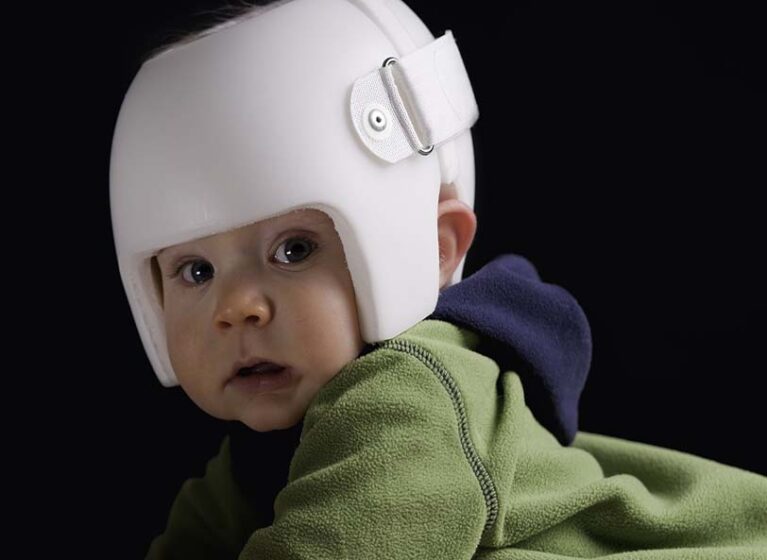
Newborn patients who cry inconsolably, don’t eat well, and vomit are common occurrences in most pediatric offices. Sometimes new parents are simply overly worried, or are unsure of what is, and isn’t, normal. Often, these issues resolve without any intervention. But sometimes, it’s craniosynostosis.
At UVA Health Children’s complex craniofacial care program, our multidisciplinary team works to offer families every option for craniosynostosis treatment. Early referrals help them ensure they can present families with a full range of treatment options. Getting a second opinion here can make a difference in your patient's care options.
Minimally Invasive Surgery for Craniosynostosis
If caught early enough, minimally invasive craniosynostosis surgery is the preference of most families. Not only does this offer the fastest recovery, but it also offers a lower chance of ongoing issues.
This option is only available for cases caught before a child turns 6 months.
Expert Consults
Pediatricians don’t always refer early for a variety of reasons. Often, they think they need a conclusive diagnosis before referral. But to do that, they need a CT scan, and many pediatricians are hesitant to subject a newborn’s brain to any amount of radiation.
Fortunately, for doctors with extensive experience with this condition, it can often be initially evaluated by sight. And consulting with other physicians has never been easier.
The children’s hospital also has options to make a conclusive diagnosis safer. Newer CT scanning machines offer significantly lower doses of radiation, and our pediatric radiology department can help even the squirmiest of newborns take clear scans.
All-In-One-Care
In our program, pediatric neurosurgery and pediatric plastic surgery experts work together. This partnership ensures that each child has the best possible outcome with the fewest procedures. Not only is this better for the child’s health, but it can also reduce stress for the whole family.
Many of our patients travel a considerable distance to see us. And we honor that by making sure each visit is as comprehensive as possible.
When to Refer
Many newborns’ heads are slightly misshapen at birth. But there are distinct features that define craniosynostosis. For the most common form, a hard ridge can often be felt along the top of the head where the cranial suture has fused too early.
But some forms of craniosynostosis look very similar to positional plagiocephaly. But, plagiocephaly goes away once a child starts to move and spends less time lying down. Craniosynostosis won’t go away.
Because an earlier diagnosis allows for more treatment options, it’s worthwhile for referring providers to get a second opinion on patients with plagiocephaly. Especially if it’s been a month or more since birth.
With digital consulting options, we can offer help remotely.